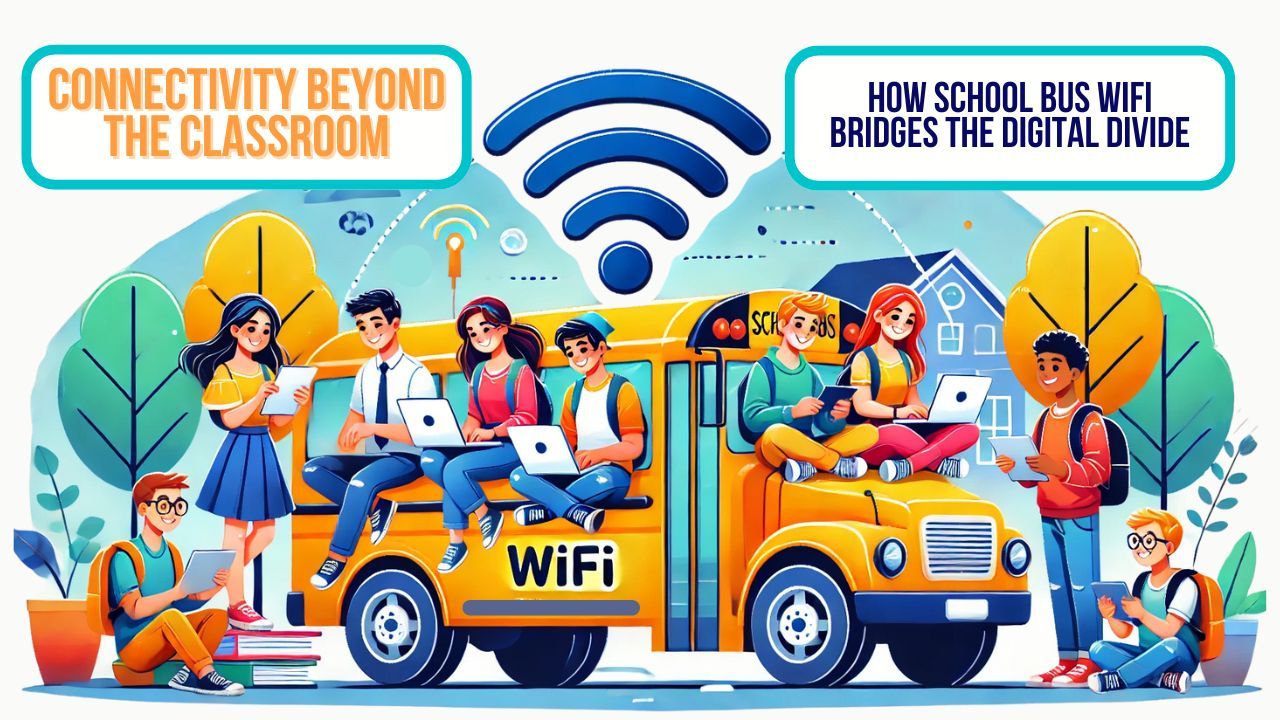Connectivity Beyond the Classroom: How School Bus WiFi Bridges the Digital Divide
Mar 30, 2025
Access to reliable internet is no longer a luxury—it’s a necessity for academic success. Yet, for many students in rural or underserved communities, a persistent digital divide still exists. By transforming school buses into mobile connectivity hubs, educators are finding innovative ways to bridge this gap and provide every student with the opportunity to learn without boundaries.
The Digital Divide in Education
Digital inequity continues to challenge schools nationwide. In many areas, students lack access to high-speed internet at home, making it difficult to complete assignments, access digital resources, or participate in online learning. This gap often leads to a cycle of educational disadvantage, as students miss out on critical opportunities to engage with modern learning tools and platforms.
- Rural and Underserved Areas: Many communities struggle with infrastructure challenges that limit broadband availability, leaving students without the necessary tools to thrive in a digital world.
- Economic Barriers: In economically disadvantaged regions, families may not have the resources to invest in high-quality internet services or devices, further widening the digital divide.
School Bus WiFi: A Bridge Over the Digital Divide
One creative solution that is gaining traction is the implementation of WiFi on school buses. This approach not only redefines the daily commute but also transforms it into a mobile learning experience.
- Consistent Access to Resources: With WiFi-enabled buses, students can access digital textbooks, educational apps, and online resources during their commute. This ensures that learning continues uninterrupted, even before arriving at school.
- Equal Opportunity: Mobile connectivity on buses provides a lifeline for students who might otherwise be left behind due to a lack of home internet. By offering a reliable source of connection, school bus WiFi plays a critical role in leveling the educational playing field.
- Flexible Learning Environments: By extending the classroom beyond traditional settings, this innovative approach allows students to participate in interactive lessons, virtual field trips, or real-time tutoring sessions while on the move.
Real-World Impact: Testimonials from the Field
Educators and families who have experienced the benefits of school bus WiFi firsthand report significant improvements in engagement and academic performance.
- Educator Perspectives: Teachers note that students arrive more engaged and ready to learn after a commute filled with interactive, educational activities. This pre-class engagement sets a positive tone for the day and helps reinforce key concepts.
- Family Feedback: Parents in underserved communities appreciate the additional learning time that school bus WiFi provides, especially for children who lack home internet. This extra connectivity often translates into better homework completion and improved overall academic performance.
Implementing a Successful Program
For school districts considering the rollout of WiFi-enabled buses, a strategic approach is essential. Here are some actionable steps to ensure a smooth implementation:
- Assess Infrastructure Needs: Evaluate the current connectivity challenges in your district and identify the areas where mobile WiFi could make the biggest impact.
- Invest in Robust Solutions: Choose high-quality, secure WiFi technology that can withstand the demands of a moving vehicle, ensuring uninterrupted connectivity for every bus ride.
- Prioritize Security and Privacy: Work with IT experts to implement strong cybersecurity measures. Protecting student data and maintaining a secure network should be at the forefront of any deployment.
- Pilot Programs and Feedback: Start with a pilot program to gather insights and feedback from educators, students, and parents. Use this feedback to refine the program before a district-wide rollout.
- Collaborative Partnerships: Consider partnering with local businesses, community organizations, and technology providers to support the program financially and logistically, ensuring its long-term success.

Conclusion
The integration of WiFi on school buses is more than just a technological upgrade—it’s a vital step toward ensuring that all students have the opportunity to succeed in a digital world. By turning everyday commutes into dynamic learning environments, schools can help bridge the digital divide and foster a more inclusive educational landscape.
Embracing mobile connectivity not only enhances the learning experience but also paves the way for innovative educational strategies that extend beyond the classroom. As more districts explore and implement these solutions, the vision of a connected, equitable education system becomes increasingly attainable.
Book Dr. Mac today to explore how School Bus WiFi can bridge the digital divide and transform learning for all students!
SUBSCRIBE TO THE BLOG
Don't miss the opportunity to transform your instructional and leadership practices. Subscribe now and receive transformative insights and strategies with every post.
We hate SPAM. We will never sell your information, for any reason.

